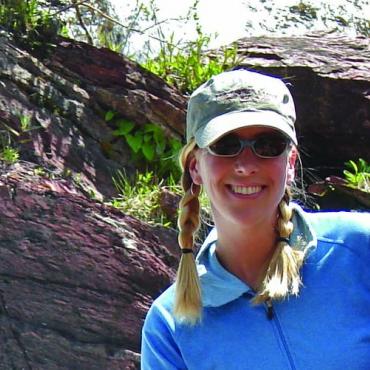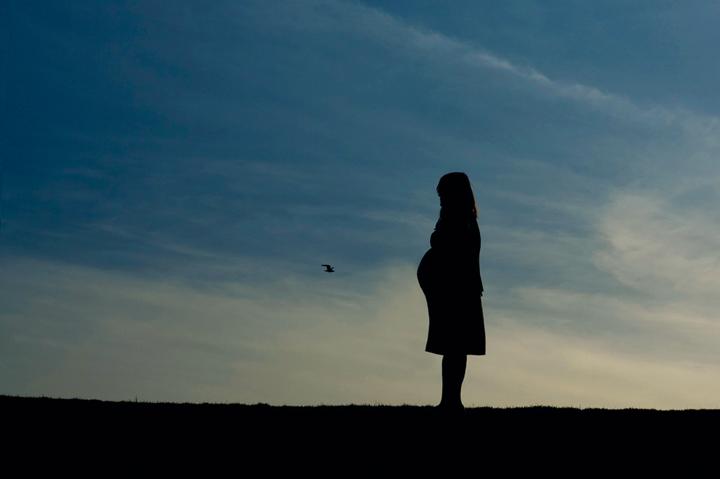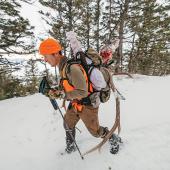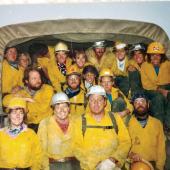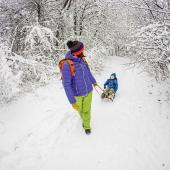Knocked Up
To bide my time while waiting for my 11-days-late baby to be born, I’d take long walks up a narrow valley in the Absaroka Mountains where I could get out of the wind and into the snow. Despite pleas from an about-to-be grandpa to avoid solo trips to the woods, I’d walk alone, introducing my baby to the ice-edged creek and chickadee songs. I’d point out snow-laden Douglas-fir boughs and the remnants of late-summer harebells beneath kinnikinnick leaves.
I personally never worried about huffing up snowy hills or cross-country skiing with a baby on board… but is it really safe for an outdoor-loving, soon-to-be-mama to be out recreating like a non-pregnant woman?
“Being outside and being in movement brings your body joy,” says Stacey Haugland, midwife and owner of the Birth Place in Bozeman. With the exception of contact sports, harness sports, and sports that pose a high risk of falling, healthy pregnant women can, and should, be very active. “We recommend 30 minutes of activity a day,” says Bozeman Deaconess OB/GYN Sam Sillitti. “Women who were already active should stay active, and those who weren’t should see a medical professional and begin exercising.”
Sports like alpine skiing and horseback riding are best practiced at your own risk—take it easy, and avoid falls. “Skiing is not a terrible thing at the very beginning of pregnancy,” Sillitti says. “But even good skiers are at a high risk of falling, and any hard fall can cause complications.” Even if you’re an expert skier, you have more than yourself to look out for. “You need to be more worried about the 14-year-old boy snowboarding than the skiing itself,” Haugland says.
Of course, you should check with your healthcare provider. Every pregnancy is different and requires an individual recreation prescription. There are, however, some things for every pregnant woman to avoid. The biggest limitation is activities that require balance. “As your pregnancy gets further along, your center of mass changes,” Sillitti says. “It takes a long time to get used to that, and your body is changing so rapidly.” Avoid activities that have any risk for abdominal trauma, especially if you were prone to falls before your pregnancy.
Don’t exercise to the point of exhaustion or breathlessness—it’s a sign that neither you nor your baby is getting enough oxygen. Also avoid exercising in extreme heat—dramatic increases in body temperature can affect the baby’s development. Keep in mind that joints become more flexible during pregnancy, so there’s a higher risk for ankle sprains and the like. And in the second and third trimesters, avoid lying on your back—it prevents adequate blood flow to the uterus. But for the most part, healthy pregnant women can, and should, participate in the same activities they did before they were pregnant.
According to the American Pregnancy Association, the benefits of exercise during pregnancy make doing it a no-brainer: it helps improve circulation, increases energy, allows more restful sleep, improves your mood and lessens mood swings, helps you to lose recover post-pregnancy, and, the real bonus, makes for easier labor and birth—not to mention a healthier baby. “Women who are active and exercising also have less weight gain,” Sillitti says. According the Haugland, research in the last five years shows that women with active, healthy pregnancies recover at a higher level after birth than sedentary women.
Trust yourself and listen to your body. As your center of gravity changes, so will your approach to outdoor recreation. And as that little life squeezes your lungs and kicks you in the ribs, you may have to slow down a bit and breathe harder, but that’s no reason to stop moving.
So take advantage of this time to play outside—it’s a lot easier to hike and cross-country ski with the baby on the inside than on the outside.


